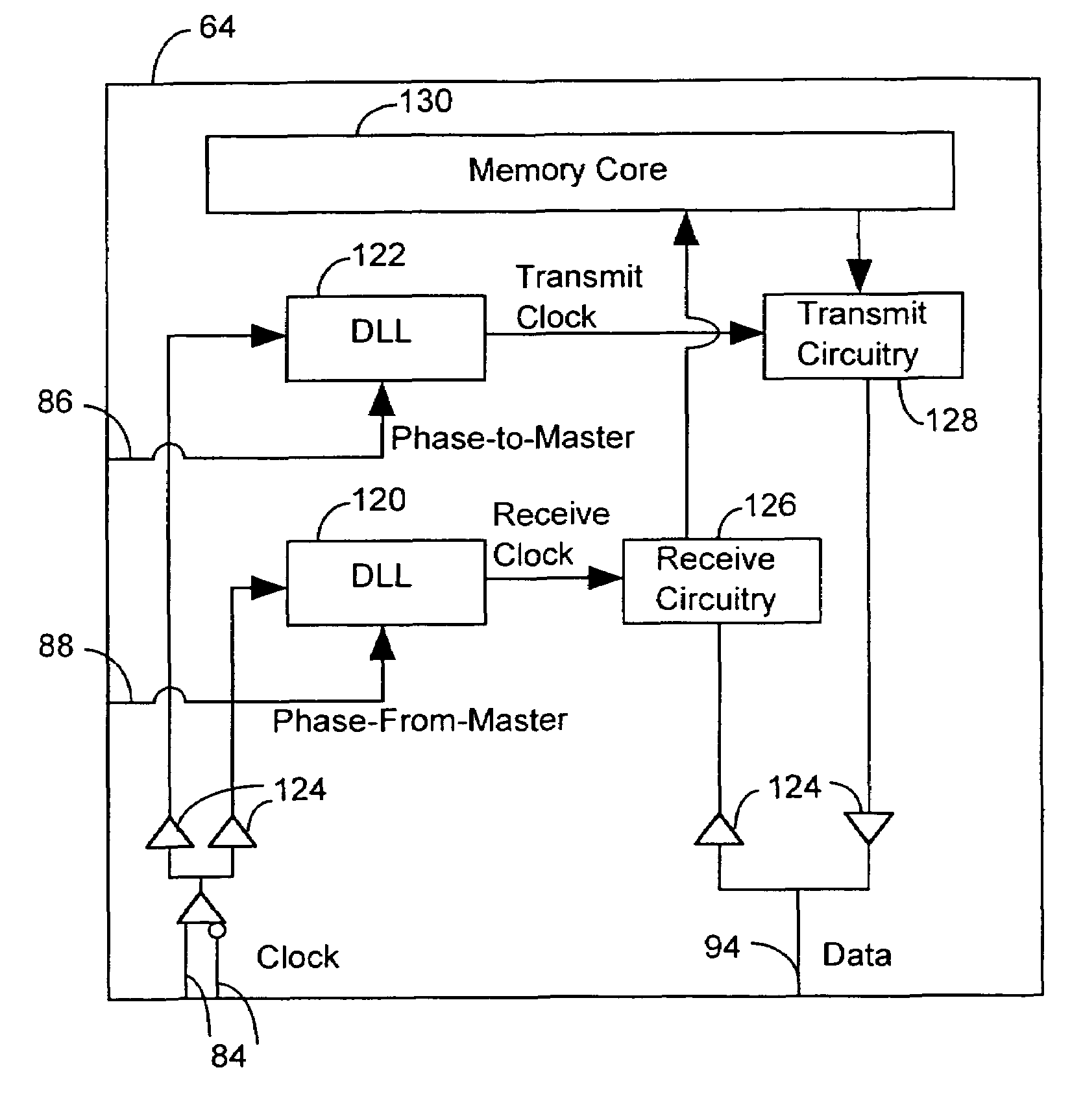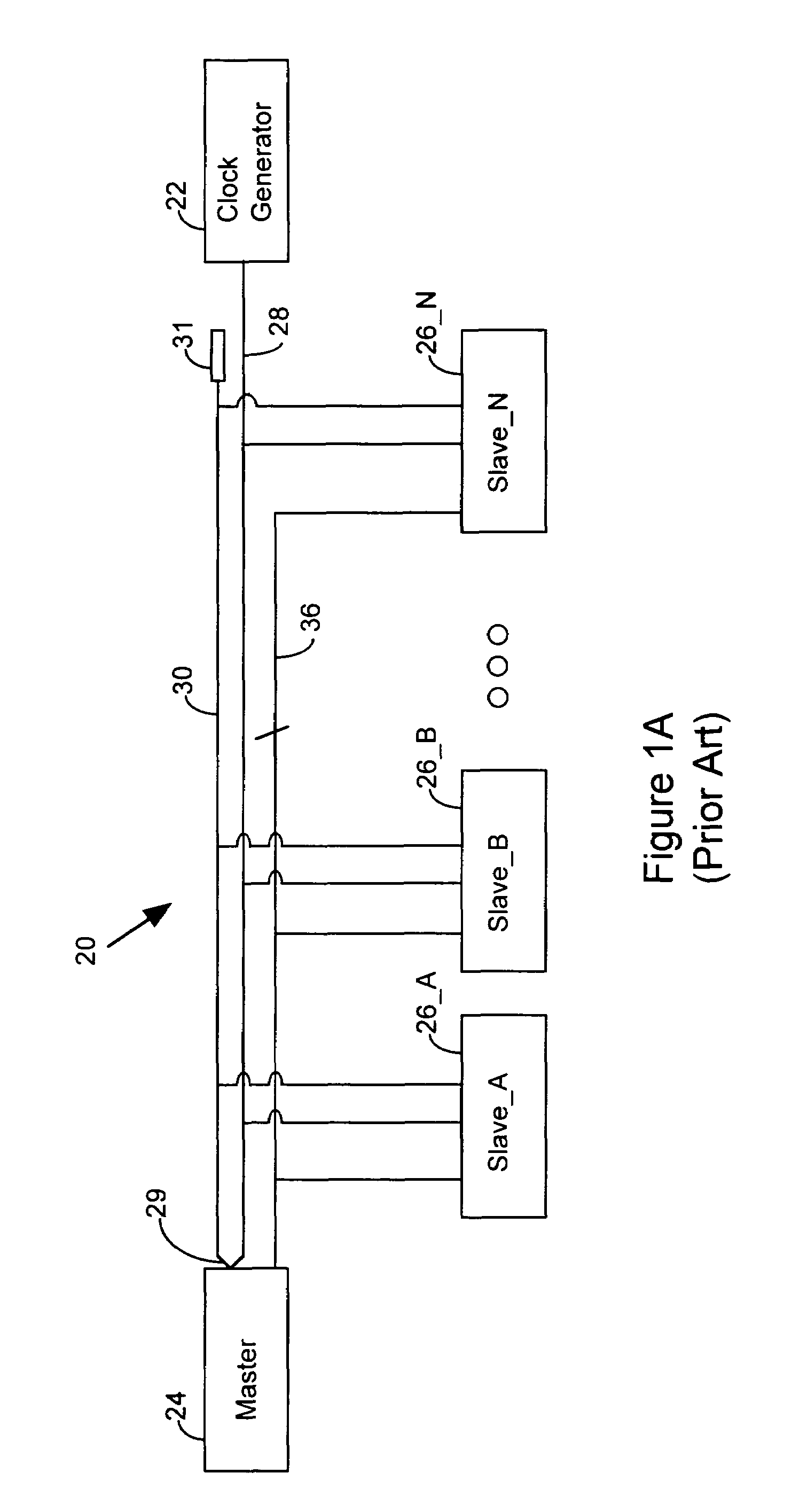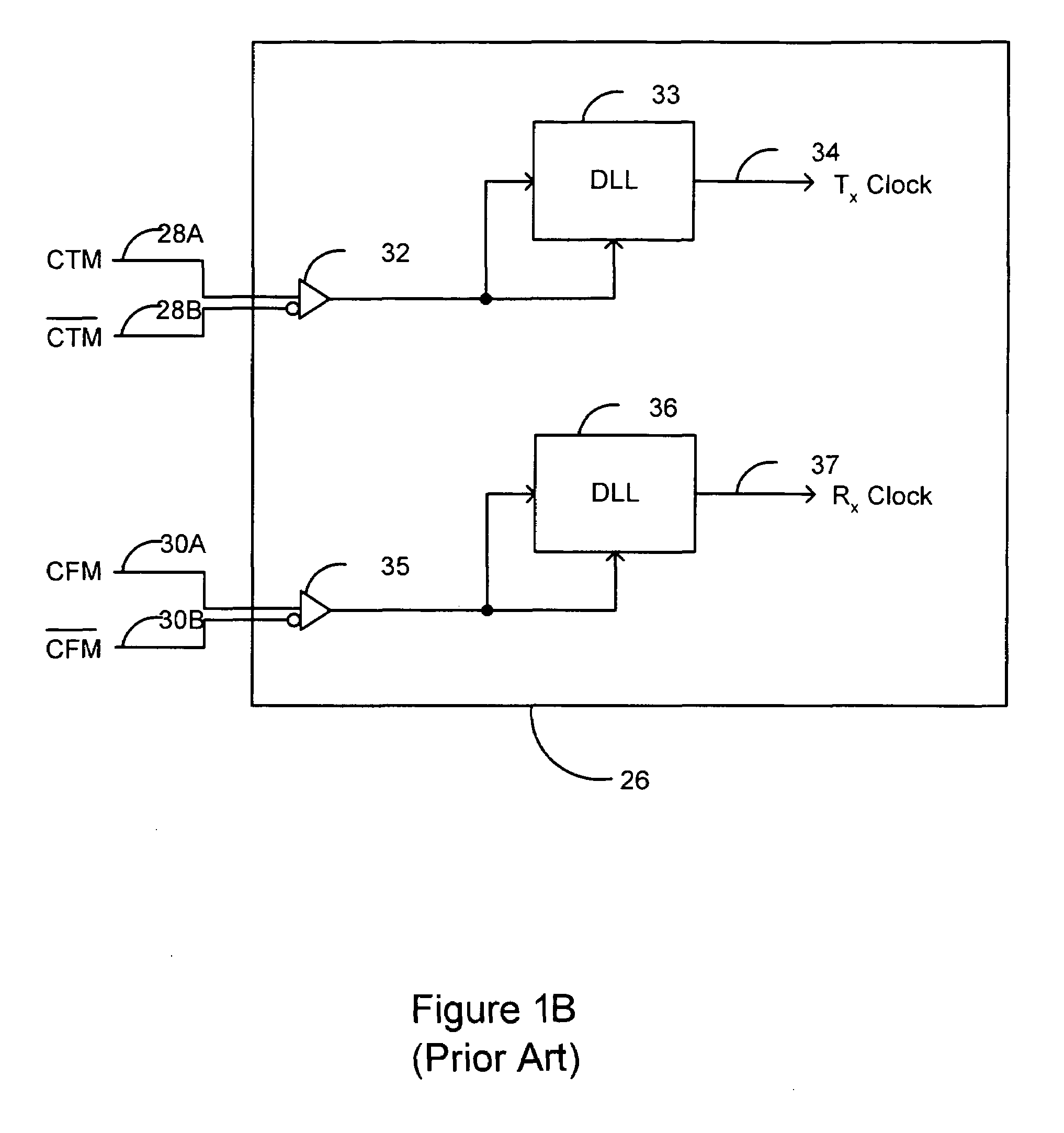Apparatus and method for operating a master-slave system with a clock signal and a separate phase signal
a master-slave system and clock signal technology, applied in the direction of generating/distributing signals, digital transmission, instruments, etc., can solve the problems of impedance discontinuities on the clock loop, timing problems, and prior art slave devices using this configuration are susceptible to timing skew errors, etc., to improve timing performance in the master-slave system, the effect of reducing the cost and power consumption
- Summary
- Abstract
- Description
- Claims
- Application Information
AI Technical Summary
Benefits of technology
Problems solved by technology
Method used
Image
Examples
Embodiment Construction
[0031]FIG. 3A illustrates a master-slave system 60 operated with a separate clock signal and phase signal in accordance with an embodiment of the invention. The system 60 includes a master device 62 (e.g., a memory controller) and a set of slave devices 64—A to 64—N (e.g., a set of memory devices): The system utilizes a clock and phase signal generator 70. As its name implies, the clock and phase signal generator 70 produces a clock signal, which is applied to line 72, and a phase signal, which is applied to line 78. The clock and phase signal generator 70 produces two distinct signals: a clock signal and a phase signal. Thus, the clock and phase signal generator 70 can be implemented with two distinct signal generating circuits: a clock generator and a phase reference generator.
[0032]Observe in the prior art system of FIG. 1A that the clock generator 22 generates a single clock signal, not the separate clock and phase signals produced by the clock and phase signal generator 70. In ...
PUM
 Login to View More
Login to View More Abstract
Description
Claims
Application Information
 Login to View More
Login to View More - R&D
- Intellectual Property
- Life Sciences
- Materials
- Tech Scout
- Unparalleled Data Quality
- Higher Quality Content
- 60% Fewer Hallucinations
Browse by: Latest US Patents, China's latest patents, Technical Efficacy Thesaurus, Application Domain, Technology Topic, Popular Technical Reports.
© 2025 PatSnap. All rights reserved.Legal|Privacy policy|Modern Slavery Act Transparency Statement|Sitemap|About US| Contact US: help@patsnap.com



